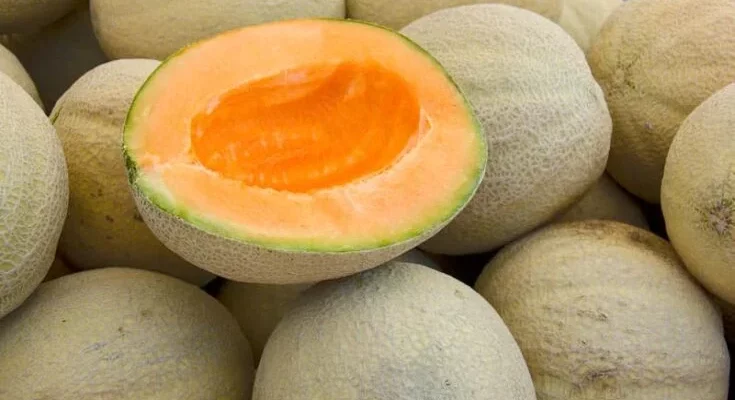Athena cantaloupes are well-known for their sweet and aromatic flesh, making them a sought-after choice for melon lovers. To ensure you select the finest Athena cantaloupes, consider the following factors in this comprehensive buyer’s guide:
- Aroma: Ripe Athena cantaloupes emit a fragrant, sweet aroma from the blossom end. Place your nose near the stem and take a sniff. A strong, pleasant scent indicates ripeness.
- Shape: Choose cantaloupes that are slightly oval or round with a symmetrical shape. Irregularities might indicate uneven ripening or potential quality issues.
- Skin Color: Ripe Athena cantaloupes typically have a warm, golden-beige skin color with light netting (the pattern of raised lines on the skin). Avoid cantaloupes with too much green color, as they may still be underripe.
- Netting: Look for cantaloupes with a well-defined netting pattern on the skin. The netting should be evenly distributed and not too deep or raised. This indicates proper ripening.
- Blossom End: Press gently on the blossom end where the stem was attached. It should yield slightly to pressure, indicating ripeness. If it’s too hard or too soft, the cantaloupe might be underripe or overripe, respectively.
- Weight: Hold the cantaloupe in your hand. A ripe Athena cantaloupe should feel heavy for its size, indicating juicy flesh and good water content.
- Firmness: Gently press the sides of the cantaloupe. It should yield slightly but still feel firm. Avoid cantaloupes that are excessively soft, as they might be overripe or have texture issues.
- Stem: Examine the stem end. If the stem is still attached and slightly raised, it suggests the cantaloupe was harvested when ripe. If the stem is missing, the cantaloupe might have been forcefully detached.
- Bruises and Blemishes: Inspect the cantaloupe for cuts, bruises, or soft spots. These could indicate damage or internal decay.
- Season and Source: Buy Athena cantaloupes during their peak season, typically late spring through summer. Choose trustworthy sources like local farmers’ markets or reputable grocery stores to ensure you’re getting fresher and higher-quality fruit.
Remember, selecting the perfect Athena cantaloupe involves considering aroma, shape, color, texture, and flavor. While these guidelines can help your choice, a bit of trial and error is still part of the process. Embrace the experience of selecting, savoring, and enjoying the delightful taste of these delicious melons!
